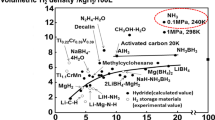Abstract
The thermal decomposition of SEX in a nitrogen atmosphere was studied by coupled thermogravimetry-Fourier transform infrared spectroscopy (TG-FTIR), and by pyrolysis-gas chromatography-mass spectrometry (py-GC-MS). The TG curve exhibited two discrete mass losses of 45.8% and 17.8% respectively, at 200 and 257–364°C. The evolved gases identified as a result of the first mass loss were carbonyl sulfide (COS), ethanol (C2H5OH), ethanethiol (C2H5SH), carbon disulfide (CS2), diethyl sulfide ((C2H5)2S), diethyl carbonate ((C2H5O)2CO), diethyl disulfide ((C2H5)2S2), and carbonothioic acid, O, S, diethyl ester ((C2H5S)(C2H5O)CO). The gases identified as a result of the second mass loss were carbonyl sulfide, ethanethiol, and carbon disulfide. Hydrogen sulfide was detected in both mass losses by py-GC-MS, but not detected by FTIR. The solid residue was sodium hydrogen sulfide (NaSH).
SEX was adsorbed onto activated carbon, and heated in nitrogen. Two discrete mass losses were still observed, but in the temperature ranges 100–186°C (7.8%) and 186–279°C (11.8%). Carbonyl sulfide and carbon disulfide were now the dominant gases evolved in each of the mass losses, and the other gaseous products were relatively minor. It was demonstrated that water adsorbed on the carbon hydrolysed the xanthate to cause the first mass loss, and any unhydrolysed material decomposed to give the second mass loss.
Similar content being viewed by others
References
S. R. La Brooy and A. R. Bax, Proc. of the 13th Australian Chemical Engineering Conference, 1985 p. 187–191.
S. R. La Brooy, A. R. Bax, D. M. Muir, J. W. Hosking, H. C. Hughes and A. Parentich, Gold 100 MINTEK, 1986 p. 123–132.
S. R. La Brooy, 1st International Conference on Hydrometallurgy, 1988, p. 466–470.
I. L. Finar, Organic Chemistry, The Fundamental Principles, Longman, London, 6th edn., 1973, Vol. 1.
S. R. Rao, Xanthates and Related Compounds, Marcel Dekker Inc., New York 1971.
I. Tyden, Talanta, 13 (1966) 1353.
J. G.Dunn, J. Avraamides, A. C. Chamberlain and N. G.Fisher, Proc. AusIMM Annual Conference, 24–28 March, Perth, Western Australia, 1996 p. 163–166.
M. Ruane, W. Hinchcliffe, J. W. Hosking and D. M. Muir, Western Australian Mining and Petroleum Research Institute, Report No 2, 1983.
L. J. Bellemy, The Infrared Spectra of Complex Molecules, Chapman & Hall, London, 1975.
K. Nakanishi, Infrared Absorption Spectroscopy, Holden-Day, San Francisco, 2nd edn., 1977.
R. H. Kagann, J. Molec. Spectr., 94 (1982) 192.
G. Herzberg, Molecular Spectra and Molecular Structure, van Nostrand Reinhold Co., Melbourne, 1945, Vol. 2.
J. R. Locker, J. B. Brukholder and E. J. Bair, J. Phys. Chem., 87 (1983) 1864.
R. T. Morrison and R. N. Boyd, Organic Chemistry, Prentice Hall International Inc., London, 6th edn., 1992.
R. D. Crozier, Flotation, Theory, Reagents and Ore Testing, Pergamon, Oxford 1992.
Author information
Authors and Affiliations
Additional information
Mr. N. G. Fisher would like to thank the A. J. Parker CRC for Hydrometallurgy for the provision of a PhD scholarship.
Rights and permissions
About this article
Cite this article
Dunn, J.G., Chamberlain, A.C., Fisher, N.G. et al. The influence of activated carbon on the thermal decomposition of sodium ethyl xanthate. Journal of Thermal Analysis 49, 1399–1408 (1997). https://doi.org/10.1007/BF01983698
Issue Date:
DOI: https://doi.org/10.1007/BF01983698




